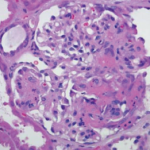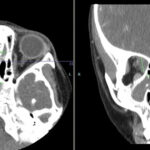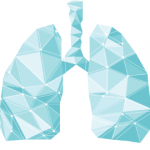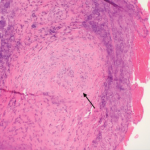But everything went according to plan while climbing Mt. Aconcagua. Even Ms. Abbott’s disease appeared to cooperate. But when Ms. Abbott and the other climbers reached 19,000 feet, a raging storm approached. Its 80-mile-per-hour winds ripped apart their tents. The group was forced to abort the summit.
On the way down, Ms. Abbott tripped, tumbled roughly 100 feet, and heard and felt her left leg snap above her ankle. At this height, where a helicopter rescue was not an option, she had to make a decision.
“I could either sit down and die or spend the next five or six hours hiking down 5,000 feet to the base camp at 14,000 feet,” she says. She stood up and began hiking down, explaining that her boot acted as a splint for her swelled leg and her trekking poles as crutches. The following day, she was airlifted off the mountain by helicopter. When she returned home three days later, doctors implanted a metal plate in her leg.
If anything, that experience made her even more determined to stick to her training schedule. Ms. Abbott and her husband climbed another six mountains around the world, including Mt. Rainier, Mt. Elbrus and Peak Lenin, without incident or adverse effects from her disease.
Dogs, Snow & Sleep Deprivation
Several months after summiting Mt. Everest, an online acquaintance jokingly asked Ms. Abbott if she was now going to race in the Iditarod.
“I started checking it out,” says Ms. Abbott, adding that although she loves dogs, she had never driven a dogsled. By then, her doctors had surrendered and ceased their attempts to limit her activities.
She contacted one of the big mushers in Alaska, who was skeptical at first. “You live where?” he asked Ms. Abbott, who has lived in California since she was 13 years old. But after meeting him in the summer of 2010 at his kennel in Alaska, he agreed to train her.
“Like climbing, I took this 10 feet at a time,” Ms. Abbott says. “I learned how to run dogs, take care of them, break trails and navigate through the winter.”
However, she still had to qualify for the Iditarod by finishing three different, 300 mile races, each lasting nearly three days across the frozen Alaskan wilderness. Like many first-timers, she got lost and was forced to scratch in two races but did finish all three within two years and was approved by the panel of judges to enter the 2013 Iditarod.



